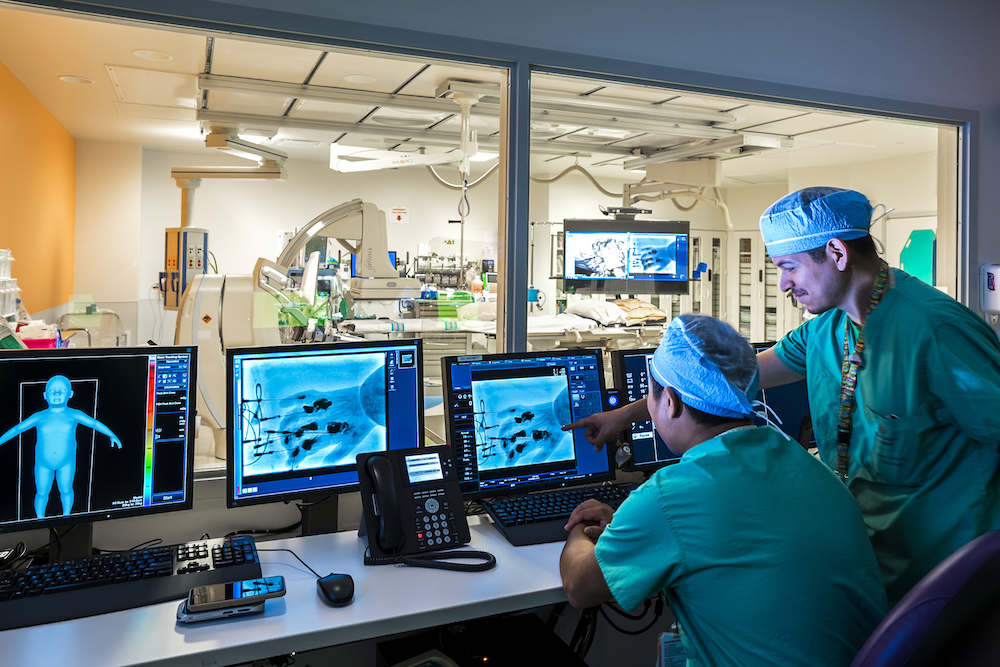
Image Source
My name is Dr. Daniel Ashton and I’m one of nine pediatric interventional radiologists practicing at Texas Children’s Hospital. We often get questions on what exactly interventional radiology entails and how we treat our patients, alongside inquiries about our backgrounds and qualifications.
We go through four years of medical school, just like all other physicians, and then specialize in interpreting medical images (think X-rays, as well as CT, ultrasound and MRI scans) from sophisticated imaging tools in a five-year radiology residency. Next, we complete a hands-on, two-year fellowship to sharpen our skills in interventional radiology, pediatric imaging and, specifically, pediatric interventional radiology. If you combine all of this training with a standard undergraduate degree, you’re looking at a total of 15 years of training after high school!
It’s typically simple to assume what a lot of physicians do just from their titles. Surgeons perform surgery, and emergency medicine doctors work in the emergency room. Pediatricians treat children, most often in an outpatient setting, and so on. For us, pediatric interventional radiologists specialize in image-guided procedures, specifically on children.
We use imaging to perform all kinds of minimally-invasive procedures, including biopsies through small incisions and the draining of abscesses (pockets of infection) to avoid surgery. We can place small tubes, such as peripherally inserted central catheters (PICCs) and ports, in the veins of our patients to allow for proper passage of medication during treatment. We can treat vein and/or artery issues from inside the blood vessels using small tubes and wires, and feed gastrojejunostomy tubes through the skin and into the stomach and small bowel using X-ray imaging as a guide. We can stop bleeding from traumatic injuries from within the arteries, leaving only small incisions. We can treat dangerous blood clots by putting medicine directly into the clot. We’re also very involved in treating children with vascular malformations, giving us the opportunity to perform life-changing procedures without leaving a scar.
It’s often hard to explain just exactly who we are and the range of services we provide, especially to worried parents who just want what’s best for their sick or injured children. Today, I placed a central line in a premature infant who weighed less than 2 pounds. Last week, I removed a metal pin from a 3-year-old’s foot using X-ray, graspers and a two-millimeter incision. Last month, I treated a large arteriovenous malformation (an abnormal connection between arteries and veins) on a teenager’s face using glue, coils and a bit of intra-arterial alcohol. These procedures were all minimally-invasive, and will require much less recovery when compared with traditional surgery.
In summary, pediatric interventional radiologists can do a lot of different things with a wide array of specialized tools, but our top priority is to try to help children get better in the least invasive way possible. We will continue to do this for your children, no matter what. This is why I’m a pediatric interventional radiologist.
If you’re interested in learning more about interventional radiology at Texas Children’s, click here.


